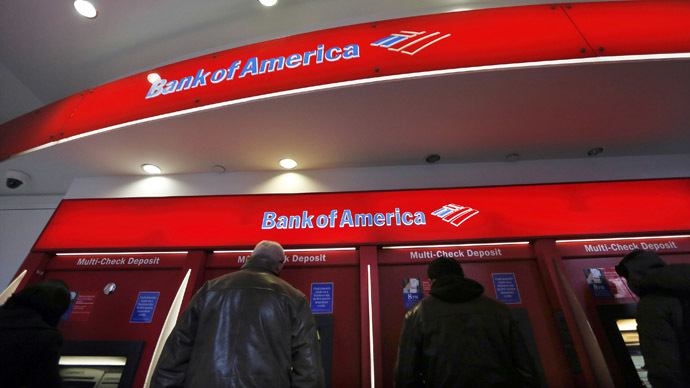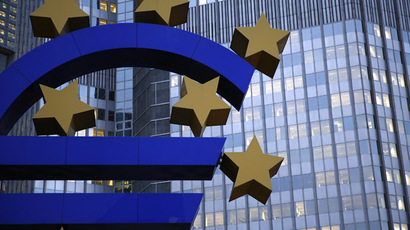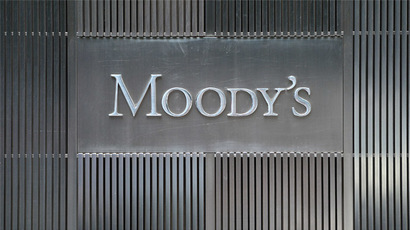US bank customers to pay for deposits if ‘easy money’ fades away

Americans may have to start paying to keep money in the bank. Retail banks have warned they might need to start charging customers and companies for deposits if the US Federal Reserve cuts interest it pays on bank reserves.
The message from the US banks comes as fears grow the Fed could start tapering its $85 billion monthly bond purchases, the Financial Times reports. Less money injected could mean the US authorities will start using alternative tools to boost the economy, like cutting interest rates.
The US Fed took the drastic decision to cut interest rates to near-zero to help stabilize the economy after the 2008 financial collapse and the following recession. This allowed banks to pay less for the money they borrow.
For the last five years, the benchmark overnight lending rate
between banks has been in the range of zero to 0.25 percent.
Record-low interest rates have helped everyday Americans get back on track after the crisis – making loans for households and small businesses as cheap as never before. However, for the lenders cheap loans mean lower revenue, which they would need to compensate with something.
Big US banks like Bank of America, JPMorgan Chase, and Wells
Fargo may try to make up the lost revenue by passing along the
burden to their depositors. Low interest rates, and the threat of
negative rates, would give banks little incentive to hold onto
money without an “extra” benefit, like charging a
premium.
However, the big US banks - Goldman Sachs, Morgan Stanley,
JPMorgan, Bank of America, and Citigroup- all had positive
balance sheets in the first nine months of 2013.
Executives at two of America’s top five banks said they will pass
the cost onto deposits if interest rates don’t rise.
America’s big banks keep trillions of dollars in the Federal
Reserve as a risk-free overnight money-earner, but cutting
interest on reserves would end this practice.
The premiums would go towards a US government insurance program.
“Right now you can at least break even from a revenue perspective,” a bank executive told the FT, warning more cuts by the Fed “would turn it into negative revenue – banks would be disincentivised to take deposits and potentially charge for them.”
“[It] would decrease the incentive for those banks to borrow in the money markets, which in turn could leave money market funds short of certain investments and force them to bid up the price of their next best options,” the bank executive said.
The Fed has said it doesn’t plan on bumping up interest rates as
long as unemployment remains above 6.5 percent.
In a similar move to boost economic growth Ardo Hansson, European
Central Bank Governing Council member, also said Monday the
ECB was “technically ready” to make its deposit rate
negative.













